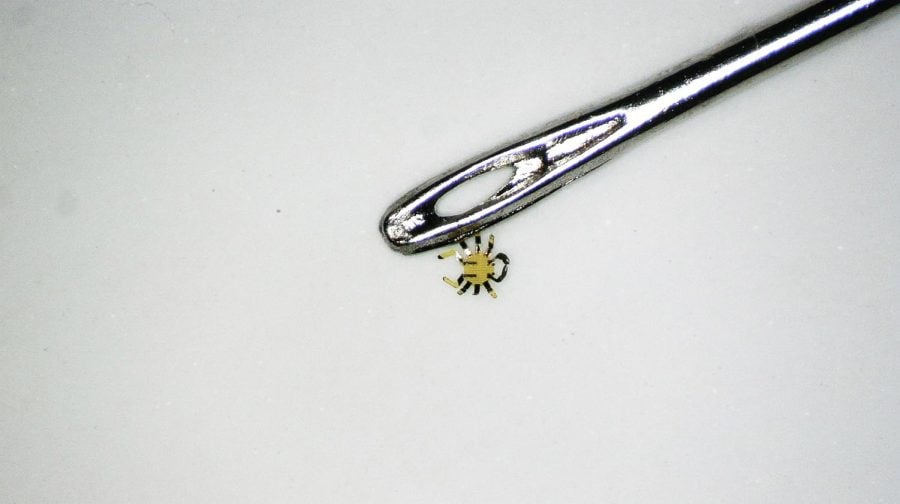Northwestern researchers develop smallest-ever walking robot in crab shape
Photo courtesy of Northwestern Now
A crab robot next to a needle. Northwestern researchers developed a micro-robot that could be capable of assisting in surgery.
May 25, 2022
Crabs! Beetles! Inchworms! Oh my!
Northwestern researchers announced the development of the smallest-ever remote controlled walking robots in shapes resembling peekytoe crabs, crickets and other insects.
In research published Wednesday, researchers said the micro-robots — smaller than a flea — might be able to assemble small industrial parts, clear clogged arteries in surgery, stop internal bleeding or eliminate tumors.
McCormick Profs. John Rogers and Yonggang Huang worked together on the project, with Rogers leading the experimental work and Huang leading the theoretical part of the project.
Rather than using an outside power source, the robots are powered by their own elastic resilience. The material they’re made of has a “memory,” and when the robots are heated, they revert to the “remembered” shape. As they change back and forth between the “remembered” heated shape and the cooled-down shape, the crabs move.
The research team said it controls the robots’ direction by waving the heating laser beam in different directions across the robots’ bodies.
Rogers and Huang made the robots by using a pop-up assembly method, starting with flat pieces. A controlled process then makes the crab “pop-up” into specific three-dimensional shapes.
As for why crabs? Rogers said the robots could be made in almost any shape, but the crab was based on his students’ “creative whim.”
Email: [email protected]
Twitter: @avivabechky
Related Stories:
— No quarterback? No problem. NU alumni design world’s first robotic quarterback


